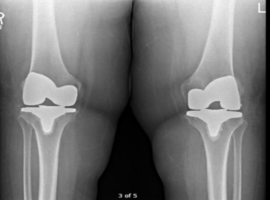Stephen Cho1*, Luke Cotton1 and Joe S. Cho2
1Loma Linda University School of Medicine, 11234 Anderson St, Loma Linda, CA 92354, USA
2Interventional Pain Medicine, Advent Health Medical Group Pain Medicine, Calhoun, GA 30701, USA
*Corresponding author: Stephen Cho, Loma Linda University School of Medicine, 11234 Anderson St, Loma Linda, CA 92354, USA.
E-mail: sdcho@students.llu.edu
Received: August 17, 2025; Accepted: September 02, 2025; Published: September 15, 2025
Citation: Cho S, Cotton L, Cho JS. An Uncommon Complication: Common Peroneal Nerve Palsy After Medial TKA. Case Rep Orthop Surg J. 2025; 4(4): 153.

